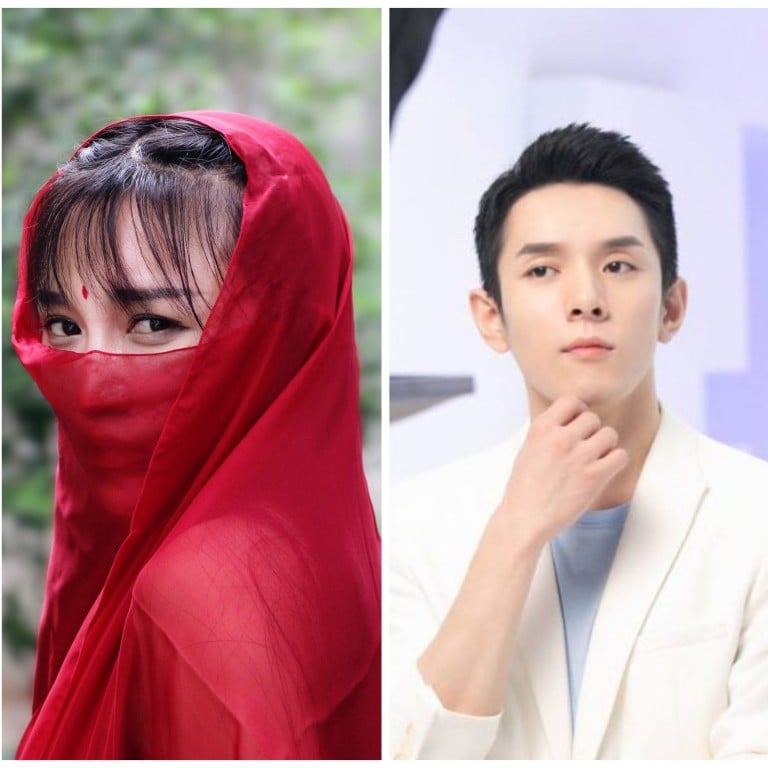Are influencers over? Virtual KOLs offer brands a safe solution to win over China’s Gen Z – just ask Versace, Nike or Converse

The mass exodus of Chinese celebrities from international brands over Xinjiang cotton – produced using the forced labour of the Uygur minority, say China’s critics – has highlighted the issues facing brands seeking to refine their China influencer strategy. Brands can take micro-steps in this direction by opting for more flexible, politically aware and collaborative approaches.

The recent dramatic influencer dropout in defence of using Xinjiang cotton is only part of a wider issue that would force brands to reconsider their China marketing strategies in an increasingly polarised world. Without a revisited plan, brands are likely to see even more complications and consumer boycotts soon.

Using virtual KOLs is an emerging trend for brands in China, said Arnold Ma, founder and CEO of the Chinese digital agency Qumin. “Ling, Luo Tianyi, KFC’s Colonel Sanders, Tmall’s Aimee, PokaPoka, and L’Oréal’s Mr Ou are all famous to Chinese Gen Zers,” he explained. “And although virtual Chinese KOLs have yet to reach their peak, brands could get on board because this industry has huge potential.”
Yet, this shift away from human to virtual KOLs is also attracting some scepticism, especially when it comes to concrete business results. Elisa Harca, co-founder of the retail consultancy Red Ant Asia, claims it is still too early to pinpoint the long-expected burst of the “influencer bubble”. “There was a lot of hype and buzz about virtual KOLs in the West and China pre-Covid-19,” she said. “But since then, the discussion has moved more toward live-streams with KOLs, KOCs (key opinion clients), or brand owners and employees, whereby anyone can become a voice of a brand.”
On Bilibili, a favourite platform with Gen-Z, the average top-level influencer has over 10 million followers. Yet, the average top-level virtual influencer has only about two million. Plus, with digital becoming the default mode of social interaction, there is greater value in a real human voice backing a brand. “In China, influencers and KOLs reign supreme, as they are still a highly effective way to reach communities. Influencers, with targeted advertising and in-platform SEO, are still the most effective marketing path for brands in the digital ecosystem,” she said.
Rather than jump into a virtual KOL-only approach or cut out KOL marketing altogether, taking micro-actions to improve the current influencer marketing model is a more feasible option for most brands. Here are four steps in that direction:
1. Choose short-term flexibility over long-term commitment
Red Ant Asia’s Elisa Harca suggests brands consider shorter-term deals versus long-term contracts to leave space for a pivot if needed. “In the past, many brands have opted for long-term collaborations in the view that it demonstrates commitment, loyalty and consistency,” she said. “However, with shifts taking place at China speed, it would be wise to break up those partnerships and collaborations so that not all your eggs are in one basket.”
2. Cultivate political sensitivity on China-related issues
Young Chinese consumer trust exists where the appetite for fashion and beauty meets fervent patriotism. To earn that trust, brands must cultivate practical political wisdom to avoid controversy. “Brands can either have a clear standpoint that supports China or avoid talking about politics on social media,” warned Qumin’s founder Arnold Ma. “Once Western brands get involved in political controversy, KOLs and celebrities will 100 per cent stop work with the brands because they need to save their reputation in the Chinese market, and they are patriotic and socially progressive.”
3. Use “creators” over “influencers”
The influencer archetype used to be someone with a big follower count who simply says nice things about the brand. But that scenario is problematic, business-wise. “Brands should move away from an overreliance on the traditional influencer model where they essentially borrow reach from KOLs,” explained Ma. “Every time they spend money on a KOL campaign, not only are they borrowing reach, but they are also paying money to help the KOLs grow their audience.”
A more sustainable alternative is to co-create with the KOLs by building brand-specific content together: a special collection, or something that remains the brand’s own asset.
4. Leverage the brand’s own digitalisation
During Covid-19, virtual consultations and founder meetups became increasingly popular ways for brands to engage with their audiences. In the beauty realm, KOEs (key opinion employees) also became more important during branded live-streams.
Across these examples, one pattern is consistent: KOLs or no KOLs, brands that experiment more digitally to convey authenticity are the ones winning over both press and consumers.
Want more stories like this? Sign up here. Follow STYLE on Facebook, Instagram, YouTube and Twitter.

- Adidas, Dolce & Gabbana, Givenchy and Coach are just a few of the big-name Western brands to have been caught up in boycotts in recent years
- Virtual KOLs Ling, Luo Tianyi, KFC’s Colonel Sanders and L’Oréal’s Mr Ou are all well known to local Gen Zers – are human influencers a thing of the past?